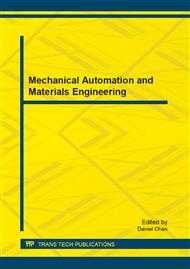p.547
p.553
p.558
p.563
p.568
p.573
p.577
p.584
p.589
Non-Equilibrium Statistical Theory of Void Microstructure Evolution in Irradiated Metals
Abstract:
The non-equilibrium statistical theory was used as a theoretical approach to modeling and predicting void evolution in metal materials. Fokker-Plank equation was introduced as the kinetic equation for the void evolution, from which the probability density distribution function of voids could be obtained. From the micro-mechanism of metal's irradiation damage, void growth rate equation was obtained using spherical Weilv model and control diffusion theory, and then was simplified based on appropriate assumptions. According to the probability density distribution function of void, a series of macro-mechanical characteristics caused by void growth can be calculated, such as: the critical radius of the void nucleation, the average radius of void. Thus the correlation between the void microstructure evolution and the macroscopic properties of metals can be achieved.
Info:
Periodical:
Pages:
568-572
Citation:
Online since:
August 2013
Authors:
Keywords:
Price:
Сopyright:
© 2013 Trans Tech Publications Ltd. All Rights Reserved
Share:
Citation:


